Posts Tagged ‘Brass bead heads versions of:’
{{start}}
The heaviest weight to size beads currently available and particularly useful if you want to get a fly down deeper that possible with a brass beads or if you want to impart an up and down swimming movement to a fly with a jerky retrieve.
{{end}}
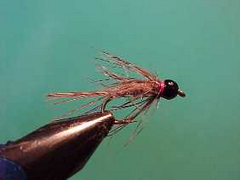
{{+1}}TBH hybrid caddis spider{{-1}}
{{start}}
This is my favourite hybrid of a spider fly and a bead head nymph with a tungsten bead up front. I carry this fly in two sizes and find them particularly useful in situations where I need a bit of weight to get a fly down yet still want the anchor fly to fish well and be enticing to trout rather than just being an anchor for other flies in the team. This is a great buggy looking fly and the tail and soft hackle provide plenty of movement.{{end}}
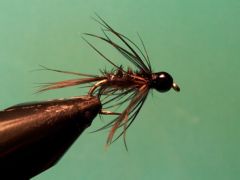
{{+1}}TBH brown and peacock hybrid spider{{-1}}
{{start}}
Brown and peacock hybrid spider nymphs are good buggy looking flies and the tail and soft hackle provide plenty of movement. One of these hybrid spider nymphs on the top dropper and two unweighted spiders or nymphs below can be a real tease for trout.{{end}}
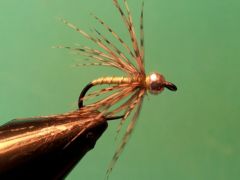
{{+1}}Tungsten bead head chartreuse and partridge spider{{-1}}
{{start}}
Bead head spiders fish very well in conjunction with traditional spider flies and give you the opportunity of adding a bit of flash to your team and more importantly get your team down a little. The benefit of that of course is that the added depth gives a little more vertical travel to your team of flies as they swing round at the end of the drift and start to lift, which as we all know is when the majority of hits occur when swinging spiders.{{end}}
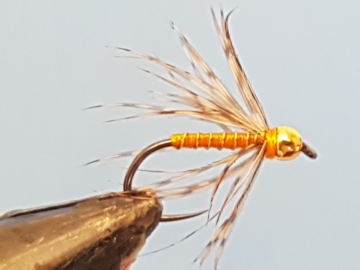
{{+1}}Tungsten bead head orange and partridge spider{{-1}}
{{start}}
I nearly always fish my bead head spiders on the point in a team of two flies and with a relatively heavily weighted nymph such as a TBH duracell jig nymph, TBH collared hare and copper or TBH chocolate caddis nymph on the top dropper on the dropper 60 or 70 centimetres up the leader.{{end}}
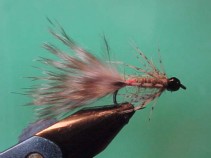
{{+1}}TBH hot butt caddis bugger{{-1}}
{{start}}
If your fishing in water with reasonably numbers of caddis your going to want to give this 3 cm bugger a swim. Caddis represent up to 70% of a trout's diet and whilst this fly is bigger than any caddis nymph I have seen trout love it. It is also a must tie on fly for discoloured water. You can fish it as a nymph but my preference is to fish it across, down and on the swing.{{end}}
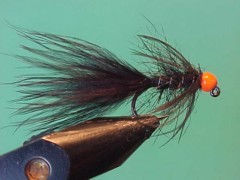
{{+1}}River Jig Bugger – CDC orange TBH and black{{-1}}
{{start}}
This is really good representation of a woolly bugger for river fishing. It sinks well and the jig hook encourages the fly to bounce along the bottom hook point up which of course mitigates snags. Whilst I have set the recipe out below for the brown, black and olive jig buggers I also tie my sparkle bugger and skirted buggers in the form of a jig bugger as shown in the photos below.{{end}}

{{+1}}Flash Harry variant{{-1}}
{{start}}
This Flash Harry variant is one of those flies I'll always give a swim particularly if the water is a bit discoloured or if its windy and rough. I like to fish it on a fast sinking line either ripped or with a stop and start jerky retrieve or roly-poly. Chuck in plenty of pauses in your retrieve and make sure you hang the fly before recasting. This fly also fishes well across species and is attractive to Bass, EP's. I carry smaller versions in red, chartreuse, gold and root with black or olive tails.{{end}}













